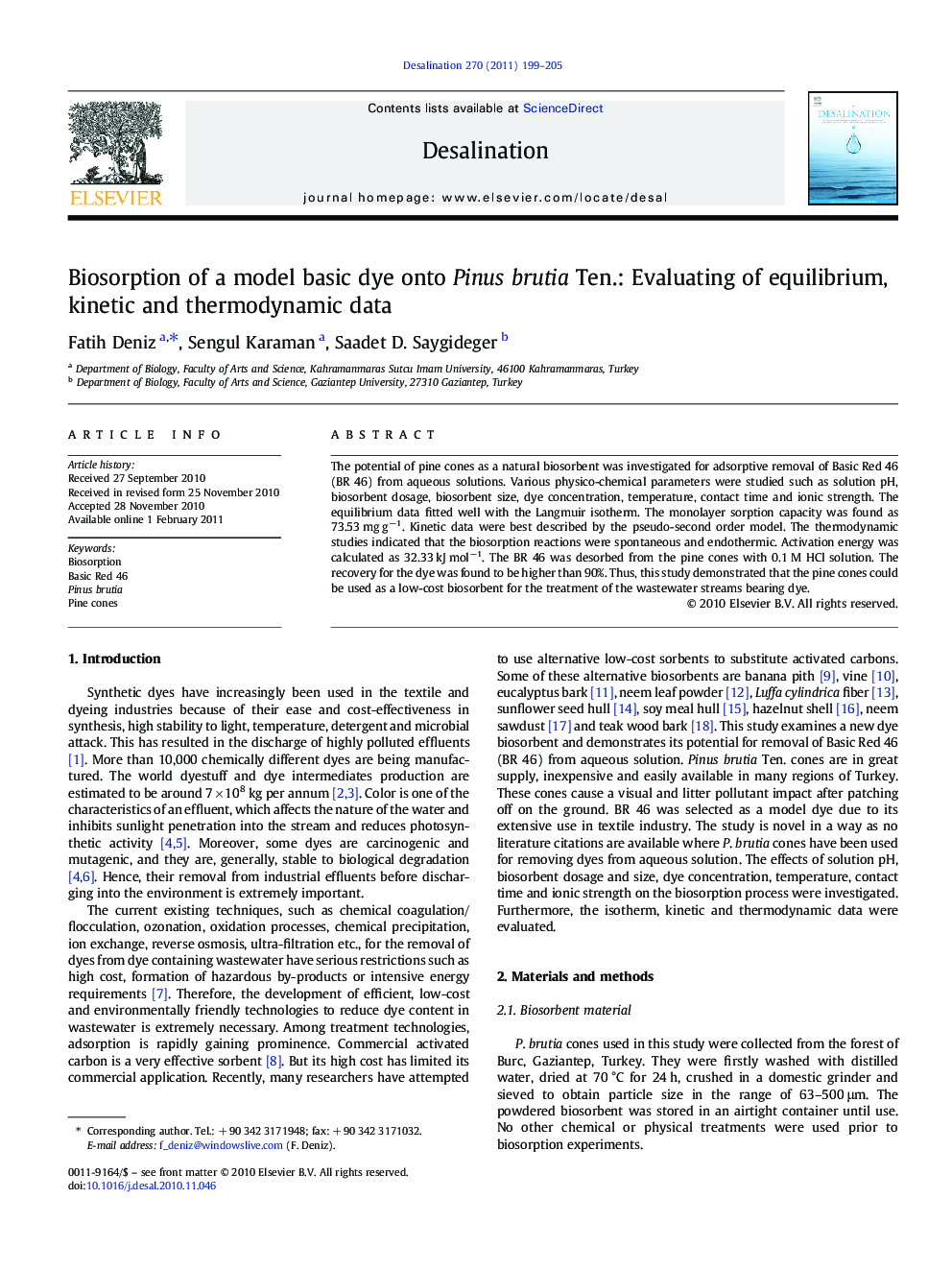| Article ID | Journal | Published Year | Pages | File Type |
|---|---|---|---|---|
| 625270 | Desalination | 2011 | 7 Pages |
The potential of pine cones as a natural biosorbent was investigated for adsorptive removal of Basic Red 46 (BR 46) from aqueous solutions. Various physico-chemical parameters were studied such as solution pH, biosorbent dosage, biosorbent size, dye concentration, temperature, contact time and ionic strength. The equilibrium data fitted well with the Langmuir isotherm. The monolayer sorption capacity was found as 73.53 mg g−1. Kinetic data were best described by the pseudo-second order model. The thermodynamic studies indicated that the biosorption reactions were spontaneous and endothermic. Activation energy was calculated as 32.33 kJ mol−1. The BR 46 was desorbed from the pine cones with 0.1 M HCl solution. The recovery for the dye was found to be higher than 90%. Thus, this study demonstrated that the pine cones could be used as a low-cost biosorbent for the treatment of the wastewater streams bearing dye.
Research Highlights►The monolayer sorption capacity was found as 73.53 mg g−1. ►Kinetic data were best described by the pseudo-second order model. ►The biosorption reactions were spontaneous and endothermic. ►The pine cones as a natural biosorbent may be an alternative to more costly materials.
